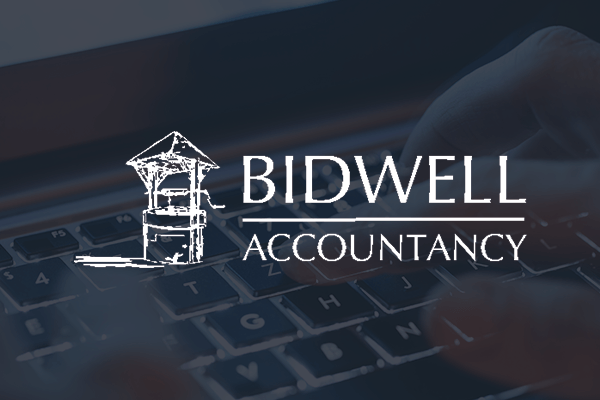Newsletter - February 2022
We hope the year is starting well for you.
We have a useful February newsletter with a bit of a tax flavour this month.
February sees an extension to the 28th for filing time allowed for self-assessment, provided returns are filed online and paid by then; although interest still applies from the end of January as usual.
We also have an update on the relaxing Covid-19 isolation rules that have come into effect since our last newsletter.
Back to tax - there is a valuable 2-month window in which to act on some tax planning - In order to put in place in the best tax planning possible then you'll need to know your numbers. Please contact us to discuss your options.
We’ve included a cautionary note on overtrading - what it is and how to avoid it. This is particularly relevant as we start to emerge from the effects of the pandemic.
And we conclude, as ever, with some key financial dates.
Knowing your business numbers
Business numbers give you clear insight into where you are and where you've been, so you are able to make educated decisions about how to move your business forward.
It helps you determine what new products to add, when to move to a new sales channel, when to hire more employees, and other important business decisions.
Here at Bidwell Accountancy, we can help you with this. Whether it’s knowing your KPI’s or planning for the future. For more information then please contact us on (01908) 380391 or click on the links below for more details.
Below is a snapshot of the reporting that we can offer as part of our Virtual Finance Director service

Tax return filing and payments update
HMRC is waiving late filing and late payment penalties for Self-Assessment taxpayers for one month - giving them extra time, if they need it, to complete their 2020-21 tax return and pay any tax due.
HMRC is encouraging taxpayers to file and pay on time if they can, as the department reveals that, of the 12.2 million taxpayers who need to submit their tax return by 31 January 2022, almost 6.5 million have already done so.
HMRC recognises the pressure faced this year by Self-Assessment taxpayers and their agents. COVID-19 is affecting the capacity of some agents and taxpayers to meet their obligations in time for the 31 January deadline. The penalty waivers give taxpayers who need it more time to complete and file their return online and pay the tax due without worrying about receiving a penalty.
The deadline to file and pay remains 31 January 2022. The penalty waivers will mean that:
- anyone who cannot file their return by the 31 January deadline will not receive a late filing penalty if they file online by 28 February,
- anyone who cannot pay their Self-Assessment tax by the 31 January deadline will not receive a late payment penalty if they pay their tax in full, or set up a Time to Pay arrangement, by 1 April 2022.
Interest will be payable from 1 February 2022, as usual, so it is still better to pay on time if possible.
Self-isolation for those with COVID-19
Since Monday 17 January, people with COVID-19 in England can end their self-isolation after 5 full days, as long as they test negative on day 5 and day 6.
The decision has been made after careful consideration of modelling from the UK Health Security Agency and to support essential public services and workforces over the winter.
It is crucial that people isolating with COVID-19 wait until they have received 2 negative rapid lateral flow tests on 2 consecutive days to reduce the chance of still being infectious.
The first test must be taken no earlier than day 5 of the self-isolation period, and the second must be taken the following day. If an individual is positive on day 5, then a negative test is required on day 6 and day 7 to release from isolation.
It is essential that 2 negative rapid lateral flow tests are taken on consecutive days and reported before individuals return to their job or education, if leaving self-isolation earlier than the full 10-day period.
For instance, if an individual is positive on day 5, then a negative test is required on both day 6 and day 7 to release from self-isolation, or positive on day 6, then a negative test is required on days 7 and 8, and so on until the end of day 10.
Those who leave self-isolation on or after day 6 are strongly advised to wear face coverings and limit close contact with other people in crowded or poorly ventilated spaces, work from home if they can do so and minimise contact with anyone who is at higher risk of severe illness if infected with COVID-19.
The default self-isolation period continues to be 10 days, and you may only leave self-isolation early if you have taken 2 rapid lateral flow tests and do not have a temperature in line with guidance.
The changes would appear to be an attempt to return key workers to their workplace as soon as possible.
Still time to consider tax planning options for 2021-22
With rare exceptions, once the end of the tax year has passed, tax planning options to reduce liability are no longer possible.
For Income Tax and Capital Gains Tax purposes, this means that the majority of the tax reduction options will cease unless actioned before 6 April 2022, the start of the next tax year.
Which means individuals and the self-employed have just over two months to consider their options.
If you fall into any of the following categories, please contact us so we can discuss your options:
- Your annual income is approaching £100,000, perhaps for the first time.
- You claim Child Benefit and the income of either parent is likely to exceed £50,000 for the first time during 2021-22.
- You have not yet considered topping-up pension contributions for 2021-22.
- You are self-employed with a 31 March 2022 year-end.
- You are self-employed and considering a significant purchase of equipment including commercial vehicles.
- You are the director/shareholder of a limited company and have not yet considered voting final dividends or bonuses for 2021-22.
- You have experienced, or are contemplating, a change in your personal status (single, married, separating, joining, or dissolving a civil partnership).
This list is by no means complete. If your tax affairs are complex pick up the phone. There is no joy in being advised after the tax year end, 5 April 2022, that if you had acted on or before that date you may have reduced your tax liabilities.
Beware overtrading
If politicians have it right, we may be approaching the end of the major disruption to economic activity of the past two years.
Which is great news for those trades badly affected by continuing lockdown and other restrictions.
Unfortunately, rapid growth following a long period of depressed trading conditions can prove to be disastrous.
The danger arises if you offer your customers more generous trading terms than your suppliers and you have very little left in your bank accounts.
Consider that you have £1,000 in your current account and have no chance of overdraft or loan support from your bank. Your sales for January 2022 are excellent, £20,000, but to secure these sales you were obliged to offer customers 60 days to pay their bills.
You were able to supply goods from stock so there is no need to immediately re-stock. However, in the month of January, you need to settle past VAT and
Corporation Tax liabilities amounting to £10,000 and in January and February general overheads (wages, rent, transport costs etc.) totalling a further £9,000.
The terms you have offered customers mean that the sales you have achieved in January will not generate cash-flow until March and you are faced with fending-off HMRC (£10,000) and other creditors (£9,000) for two months with just £1,000 in your bank account.
Business owners facing this dilemma need to consider their options and creating a simple cash-flow forecast will reveal the peaks and troughs in your bank balances and give you time to consider your choices.
Please call if you need help with setting up a cashflow forecast. We have software available that will link up to Xero or Quickbooks
Tax Diary February/March 2022
1 February 2022 - Due date for Corporation Tax payable for the year ended 30 April 2021.
19 February 2022 - PAYE and NIC deductions due for month ended 5 February 2022 (If you pay your tax electronically the due date is 22 February 2022).
19 February 2022 - Filing deadline for the CIS300 monthly return for the month ended 5 February 2022.
19 February 2022 - CIS tax deducted for the month ended 5 February 2022 is payable by today.
1 March 2022 - Due date for Corporation Tax due for the year ended 31 May 2021.
2 March 2022 - Self-Assessment tax for 2020-21 paid after this date will incur a 5% surcharge unless liabilities are cleared by 1 April 2022, or an agreement has been reached with HMRC under their time to pay facility by the same date.
19 March 2022 - PAYE and NIC deductions due for month ended 5 March 2022 (If you pay your tax electronically the due date is 22 March 2022).
19 March 2022 - Filing deadline for the CIS300 monthly return for the month ended 5 March 2022.
19 March 2022 - CIS tax deducted for the month ended 5 March 2022 is payable by today.

Unit 157, Milton Keynes Business Centre,
Foxhunter Drive, Milton Keynes,
Buckinghamshire, MK14 6GD
Bidwell Accountancy





